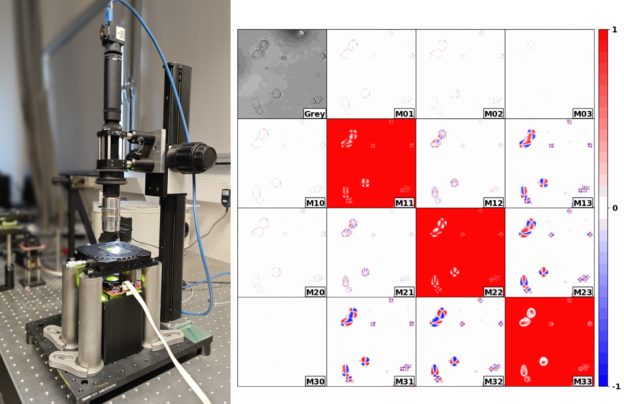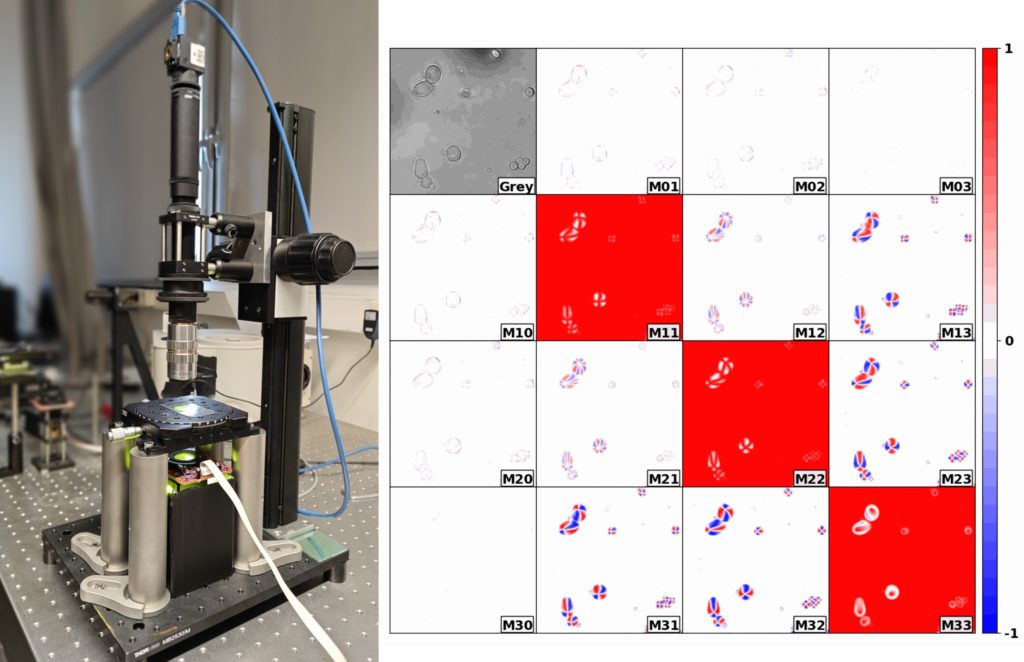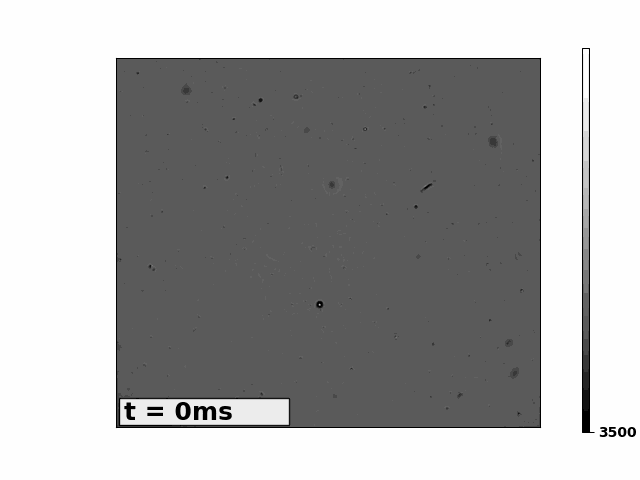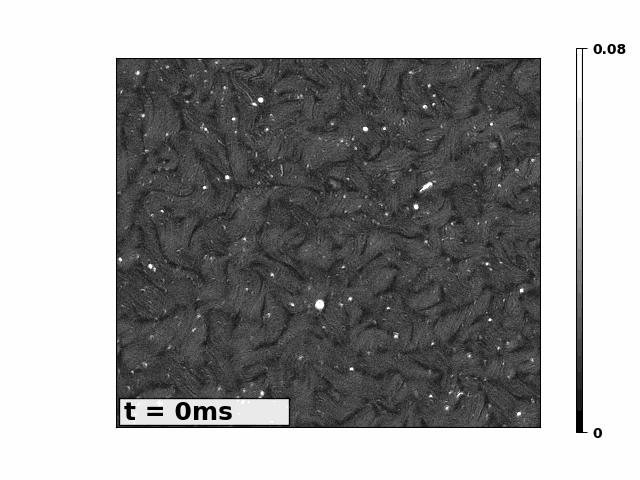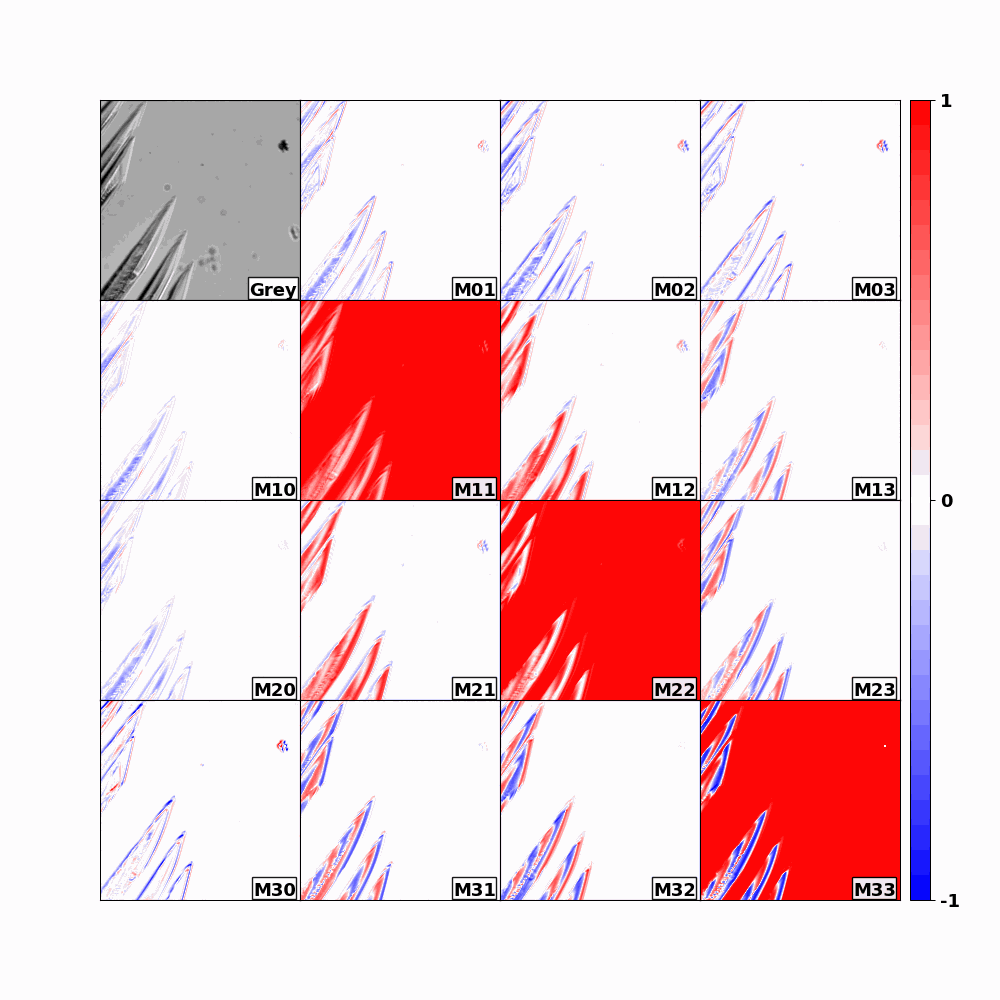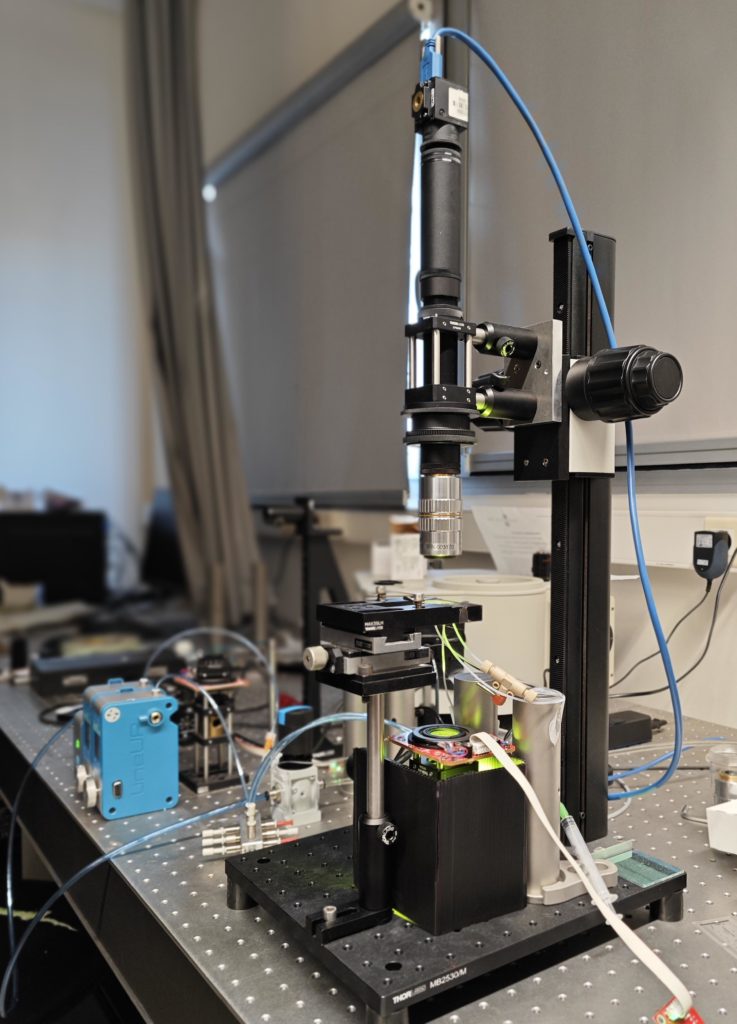Our new Mueller matrix microscope prototype
- High sensitivity and repeatability in distinguishing specific, low-level Mueller Matrix elements.
- Simultaneous measurement of 12 Mueller matrix elements within a rapid timeframe of less than 3 seconds, catering to dynamic applications.
- Real-time measurement capabilities operating at video-rate speed, specifically capturing 2 Mueller Matrix elements for linear birefringence assessments, covering both magnitude and orientation.
- Custom algebraic algorithm to reconstruct the full 16 MM elements from the 12 measured MM elements (in the absence of depolarization)
- Adjustable to different wavelengths (VIS and NIR)
- Software packages with data analysis features for all 6 polarization parameters (linear retardation – magnitude and angle; circular retardation – magnitude; linear diattenuation – magnitude and angle; and circular diattenuation – magnitude).
- Optimal optical and polarimetric design engineered for cost efficiency without compromising on performance.
- Highly customizable layout.
Examples
Film of biofilaments from cytoskeleton proteins. Self-propelled system.
Intensity imaging (what a normal microscope can see)
Live-birefrigence magnitude imaging (what our microscope can measure in real-time)
We usually report birefringence values in radians but they can be easily converted to nm. In this case, the 0.08 radians shown in the scale are equivalent to 7 nm of birefringence: 0.08*550 nm/(2*pi).
Full MM in a growing crystal
The optical layout is very flexible to accommodate different different types of in-situ experiments. This is a photo of our prototype doing measurements in microfluidic chambers

